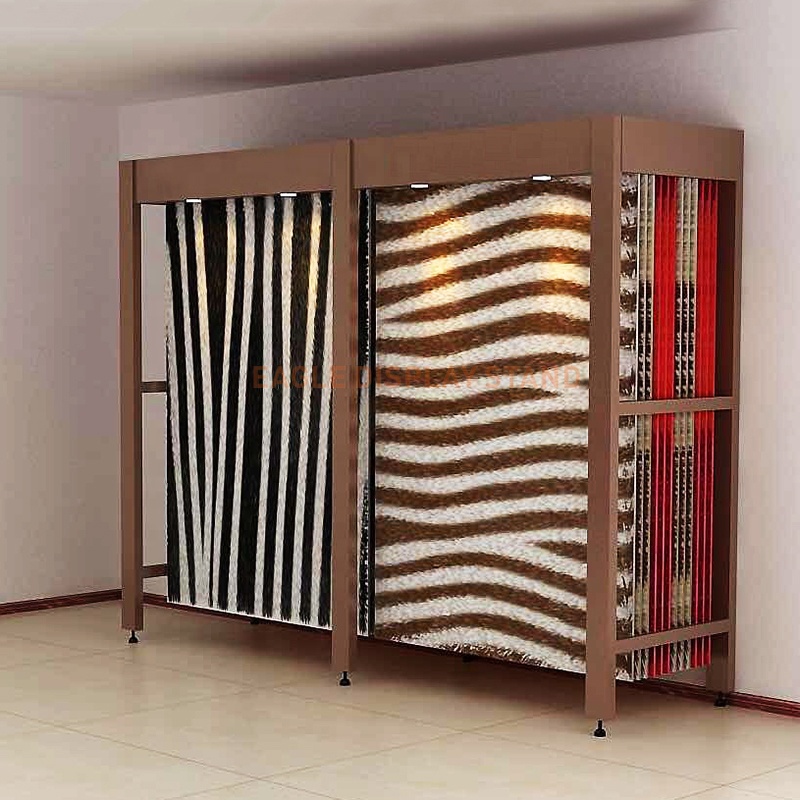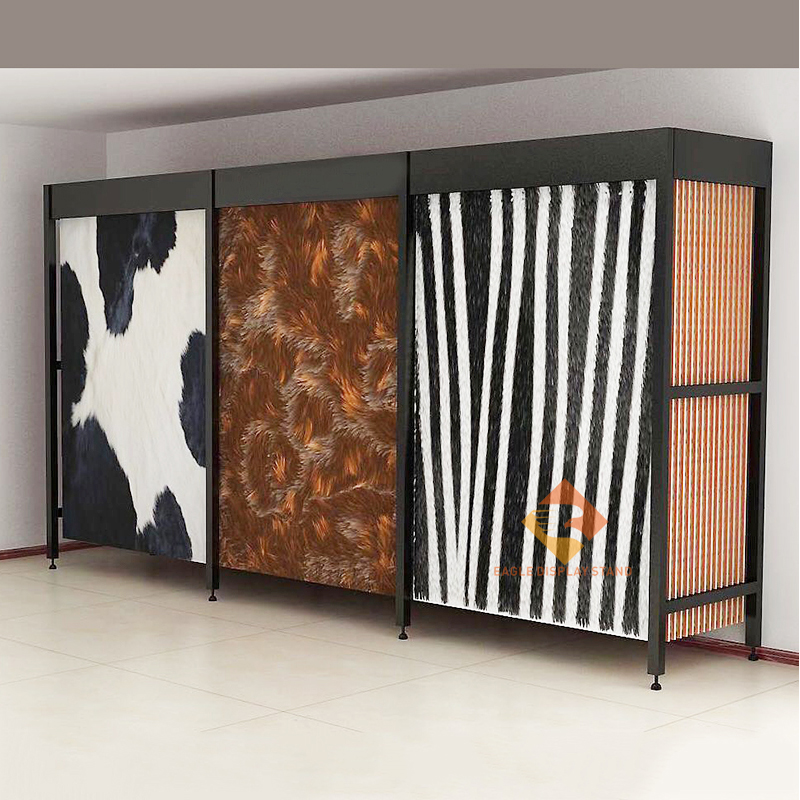The Importance of Effective Visual Merchandising
Effective visual merchandising is a critical aspect of retail success, as it plays a vital role in capturing customer attention, highlighting products, enhancing brand image, and ultimately driving sales. According to a comprehensive study by ContraVision (https://www.contravision.com/visual-merchandising-stats/), well-executed visual displays can increase sales by up to 30%.
By creating visually appealing and engaging displays, retailers can draw customers into their stores and encourage them to explore and interact with their products. Strategically arranged displays not only showcase merchandise but also communicate the brand’s personality and values, fostering a stronger connection with customers.
Moreover, effective visual merchandising helps retailers stand out in a competitive market by creating a unique and memorable shopping experience. As consumers increasingly value exceptional retail experiences, investing in compelling visual displays can significantly enhance brand image and customer loyalty.

Benefits of Using Carpet and Rug Display Racks
Carpet and rug display racks offer numerous advantages for retailers, enhancing both the customer experience and operational efficiency. One of the primary benefits is space optimization. By vertically displaying samples, retailers can save valuable floor space while showcasing a wide variety of options.
Display racks facilitate an organized presentation, allowing customers to easily browse and compare different styles, patterns, and textures. This organized approach not only creates a visually appealing environment but also provides easy access for customers to view and feel samples, fostering an engaging shopping experience.
With the ability to display more rug samples within a compact footprint, retailers can offer a broader selection, catering to diverse customer preferences and increasing the likelihood of making a sale. Additionally, well-designed displays can effectively draw customer attention, highlighting featured items or new arrivals, and encouraging impulse purchases.
Types of Carpet and Rug Display Racks
There are several types of carpet and rug display racks available to suit different retail spaces and merchandising needs:
Floor Standing Racks: These freestanding racks are a popular choice for their mobility and ability to create dedicated rug display areas. They often feature multiple tiers or arms to showcase multiple rugs at once. Source
Rotating Racks: Rotating racks allow customers to easily browse through a large collection of rugs by spinning the circular rack. These are space-efficient and great for high-traffic areas.
Sliding Racks: Similar to rotating racks, sliding racks have shelves that can be pulled out to reveal additional rug samples. Source These are ideal for compact spaces while still allowing access to a wide range of options.
Wall-Mounted Racks: Wall racks are a space-saving option, keeping rugs off the floor and utilizing vertical space. They can be customized to fit specific wall dimensions.
Customizable Options: Many manufacturers offer customizable display racks to meet unique store layouts or branding needs. These can include custom sizes, finishes, and configurations tailored to the retailer’s specifications.

Factors to Consider When Choosing a Display Rack
When selecting the perfect carpet and rug display rack for your retail store, there are several key factors to consider. These include:
Type of Products: The type of carpets and rugs you plan to display will influence the rack design. Heavier, bulkier rugs may require sturdier racks with higher weight capacities, while lightweight carpets can be displayed on more lightweight racks.
Available Space: Measure the area where you plan to place the display rack to ensure it fits comfortably without obstructing foot traffic or feeling cramped. Consider the height, width, and depth of the rack in relation to your store layout. Source
Weight Capacity: Evaluate the weight of the carpets and rugs you plan to display and choose a rack with an appropriate weight capacity. Overloading a rack can lead to safety hazards and potentially damage your merchandise.
Budget: Carpet and rug display racks come in a range of prices, from economical options to high-end, customized solutions. Determine your budget and prioritize features that align with your needs and goals.
Aesthetic Preferences: Consider the overall aesthetic of your store and choose a display rack that complements your brand and existing decor. Racks are available in various materials, finishes, and designs to suit different styles.
Customization Options: If you have specific display requirements or want to incorporate branding elements, look for racks that offer customization options, such as custom sizes, colors, or the ability to add signage or graphics.

Strategic Placement of Displays
The strategic placement of carpet and rug displays within a retail store can significantly influence customer engagement and sales. According to The Power of Retail Design, high-traffic areas are prime real estate for merchandising displays. Positioning carpet and rug displays in areas with high foot traffic, such as near the entrance or along main aisles, can effectively capture customer attention and encourage browsing.
Additionally, complementary product displays can enhance the visual appeal and cross-selling opportunities. For instance, displaying rugs alongside furniture or home decor items can inspire customers to envision how the pieces can be combined to create a cohesive look. Retailers can also highlight new arrivals by prominently showcasing the latest carpet and rug collections, enticing customers to explore the latest trends and designs.
Grouping and Arranging Displays
Grouping carpets and rugs by style or color scheme creates a visually cohesive and appealing display. This approach helps customers easily navigate and find pieces that complement their desired aesthetic. According to interior design principles, grouping items in threes is particularly effective for establishing balanced and harmonious arrangements.
When arranging your displays, aim to create distinct yet connected groupings that flow naturally. Rotate your inventory regularly to showcase new arrivals and keep the displays looking fresh. Consider the principles of rug placement, allowing approximately 18 inches of exposed floor space around each rug to define its boundaries within the grouping.
Effective Signage and Lighting
Descriptive signage plays a crucial role in enhancing your carpet and rug displays. Well-designed signs can provide customers with valuable information about the materials, patterns, and origins of the rugs, helping them make informed purchasing decisions. According to Tupp Signs, effective signage in retail environments can improve navigation, build brand recognition, and ultimately boost sales.
In addition to signage, proper lighting is essential for showcasing the true beauty and intricate details of your carpet and rug collection. As noted by UniChois, custom lighting integrated into display racks can highlight specific features, such as intricate patterns or vibrant colors, enhancing the overall customer experience and making your products more appealing.

Maintaining Neat and Appealing Displays
Keeping your carpet and rug displays clean and well-maintained is crucial for creating an inviting shopping experience. Regular vacuuming and spot cleaning are essential to remove dirt, dust, and debris that can accumulate on the display samples. According to the Carpet and Rug Institute, vacuuming should be done frequently, especially in high-traffic areas, and professional cleaning should be scheduled every six months.
In addition to regular cleaning, it’s important to reorganize and rotate your product displays periodically. This not only helps to maintain a fresh and visually appealing presentation but also ensures even wear on the samples. Address any signs of damage or wear promptly by replacing or repairing the affected samples to maintain a polished and professional appearance.
Measuring the Success of Displays
To ensure your carpet and rug displays are effectively driving sales and engaging customers, it’s crucial to measure their success. Here are a few key strategies:
1. Track sales data: Monitor sales figures for specific carpet and rug styles or collections featured in your displays. Analyze data to identify any noticeable spikes or patterns that may correlate with changes in your display strategies. This can help you understand which displays are resonating most with customers. Source: The Power Of Retail Design
2. Collect customer feedback: Encourage customers to share their thoughts and impressions about your carpet and rug displays. This can be done through in-store surveys, online reviews, or by training your sales staff to gather feedback during interactions. Customer insights can reveal areas for improvement or highlight particularly effective display techniques.
3. Adjust displays accordingly: Based on your sales data and customer feedback, be prepared to make adjustments to your displays. This could involve rearranging layouts, updating signage, or rotating featured products. An agile approach allows you to continuously optimize your displays for maximum impact and sales potential.
Conclusion and Key Takeaways
Effective visual merchandising through the strategic use of carpet and rug display racks can significantly enhance the shopping experience for customers and drive sales for retailers. By implementing the best practices outlined in this article, such as selecting the appropriate display rack types, strategically placing and grouping displays, utilizing effective signage and lighting, and maintaining neat and appealing displays, retailers can create an inviting and engaging environment that showcases their product offerings in the best possible light.
Remember, the key benefits of using display racks include saving floor space, organized presentation, easy access for customers, the ability to display more samples, and drawing customer attention. By carefully considering factors such as the type of carpets/rugs being displayed, available floor space, weight capacity, budget, and aesthetic preferences, retailers can choose the display racks that best suit their needs.
Ultimately, effective visual merchandising is crucial for carpet and rug retailers to stand out in a competitive market and provide a memorable shopping experience for their customers. By embracing these best practices, retailers can not only enhance their sales but also establish themselves as a destination for customers seeking high-quality carpets and rugs. Source
